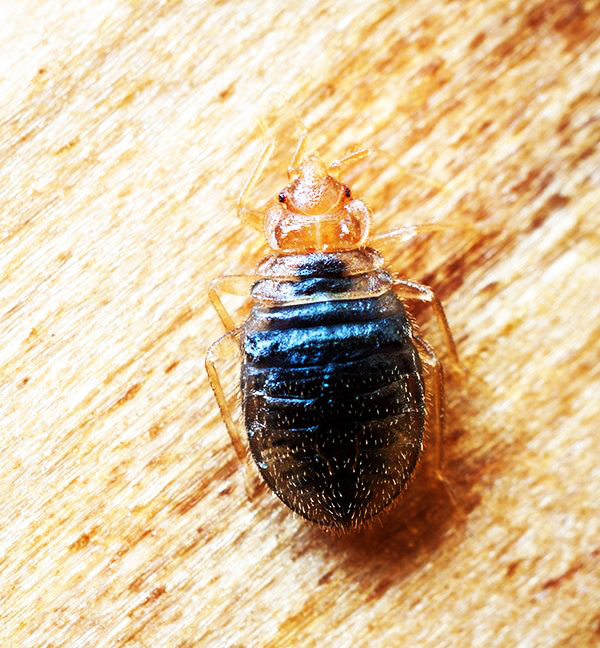Species of bedbugs like Cimex lectularius and Cimex hemipterus have undergone a worldwide resurgence since the late 1990s . These blood-sucking insects readily bite humans. Cutaneous reactions may occur and can start out as small macular lesions that can develop into distinctive wheals of around 5 cm in diameter, which are accompanied by intense itching. Occasionally, bullous eruptions may result. If bed bugs are numerous, the patient can present with widespread urticaria or eythematous rashes. Often, bites occur in lines along the limbs.
The design of a bedbug’s mouth part is for piercing the skin and sucking blood and have extremely fine needlelike stylets that are inserted into the skin and are withdrawn after feeding. During feeding, the bug injects saliva that contains various protein fractions, some of which have anticoagulant properties.

A single bite from a bed bug, particularly soon or some time after the bite, is not easily identifiable as being caused by that insect. The development of a wheal may suggest that bed bugs are present, and a line of bites along the limb may provide further circumstantial evidence.
It is not surprising that bed bugs are often lumped together with other hematophagous arthropods and suspected of being vectors of various pathogens.
However their impacts can be minimized to a vast extent For those in the accommodation sector, the key to reducing bed bug impacts is early detection. This minimizes the risk of the infestation spreading, control is more easily achieved, and the potential for clients to be bitten (with subsequent litigation and a damaged reputation for the organization) is reduced. Thus, early detection is about saving money and protecting the company brand. The early detection of bed bugs can be undertaken by various means,. Regular and thorough inspections by housekeeping staff during routine room maintenance, or via pest managers, are important components of an early detection program. The use of bed bug monitors or traps may assist in early detection.
Various nonchemical means of control can be undertaken to either reduce the biomass of the bed bug infestation or achieve complete control. Nonchemical technologies tend to have a more immediate effect on reducing bed bug numbers and have the added advantage of being generally less hazardous than insecticides (244). Usually, some level of insecticide application will be needed, although an integrated program utilizing nonchemical means of control will reduce the amount of insecticidal product required.
Heat is a very practical and effective means of nonchemical bed bug control Heat can be applied via the use of steam, through the laundering of infested clothing and bedding, via hot washing and drying in the sun for hours.
Insecticides are usually employed except in small infestations. The right type of product and the right formulation are critical for achieving a successful eradication.
For more effective results on the prevention of bedbug ,Expert advice should be taken from a Pest Control Service.
A Pest Control Service deploys expert methods that effectively keeps bedbugs away from you.From finding the reasons for their infestation to applying methods that eradicate them,Pest Control Services take care for proven long lasting results.









.jpg)


0 coment�rios: